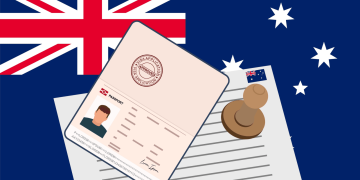SaaS products are all the rage these days. They’re flexible, efficient, and cost-effective, which makes them ideal for businesses of all sizes. But how do you actually go about building a SaaS product? It’s not as simple as just throwing up a website and calling it a day. In fact, there’s a lot that goes into it. From market research to product development to marketing and beyond, there are a lot of steps involved in creating a successful SaaS product. In this blog post, we will explore the five main steps you need to take in order to build a successful SaaS product. From ideation to implementation, read on to learn more about what it takes to create a winning SaaS product.
How to validate your SaaS product idea
Building a SaaS product is no easy task. There are a lot of factors to consider and the process can be quite overwhelming. However, if you take the time to validate your SaaS product idea, the process will be much easier at https://litslink.com/services/saas-development and you’ll be much more likely to succeed.
To validate your SaaS product idea, you need to do three things: research your target market, validate your assumptions, and get feedback from potential customers.
Research Your Target Market
Before you can even begin to validate your SaaS product idea, you need to know who your target market is. Who are you building this product for? What needs does this market have that are not being met by existing solutions? Once you have a good understanding of your target market, you can move on to the next step.
Validate Your Assumptions
Once you know who your target market is, it’s time to start validating your assumptions. What problem does your product solve? Is this problem significant enough that people would be willing to pay for a solution? Do any existing solutions already solve this problem? If so, how well do they solve it? How could your solution be better? Answering these questions will help you determine whether or not there is a need for your product in the marketplace.
Get Feedback From Potential Customers
The best way to validate your SaaS product idea is to get feedback from potential customers. Talk to
How to build a great team to support your product
A team is essential to the success of any product, especially a SaaS product. A great team will have a variety of skills and experience that can support your product in different ways. Here are some tips on how to build a great team to support your product:
1. Hire a mix of experienced and inexperienced employees.
2. Make sure your team has a variety of skills and experience.
3. Foster a collaborative environment within your team.
4. Encourage creativity and new ideas from all members of your team.
5. Hold regular meetings to keep everyone on the same page and address any issues that may arise.
How to design and develop your SaaS product
- How to design and develop your SaaS product
Designing and developing a SaaS product can be a complex process, but there are some key things you can do to make it easier. Here are four tips:
1. Keep it simple
When you’re designing and developing your SaaS product, it’s important to keep things as simple as possible. That means having a clear and concise vision for what your product is and what it does. It also means focusing on the core features that your users will care about most.
2. Make it user-friendly
Your SaaS product needs to be easy to use if you want people to actually use it. That means having a well-designed interface that’s intuitive and easy to navigate. It also means providing helpful documentation and support resources so users can get the most out of your product.
3. Build for scale
As your SaaS product grows, you’ll need to be able to scale up your infrastructure and systems accordingly. That means designing your product with scalability in mind from the start. It also means having a plan for how you’ll add new features and functionality as your user base grows.
4. focus on quality
When you’re designing and developing your SaaS product, it’s important to focus on quality over quantity. That means making sure every feature is well-designed and works flawlessly before adding anything new. It
How to price your SaaS product
When it comes to pricing your SaaS product, there are a few things you need to take into account. First, you need to consider the value of your product. What does it offer your customers that they can’t get from any other product on the market? This is what will ultimately determine how much you can charge for your product.
Next, you need to consider your competition. What are other companies in your space charging for similar products? You don’t want to price yourself out of the market, but you also don’t want to leave money on the table by undercharging.
Finally, you need to think about your business model. How much does it cost you to develop and maintain your product? What are your margins? This will help you determine a price that is profitable for your business while still providing value for your customers.
Pricing a SaaS product can be tricky, but if you take the time to consider all of the factors involved, you can come up with a price that is fair for both you and your customers.
How to market and sell your SaaS product
Assuming you have already built your SaaS product, congratulations! You have completed the first and arguably most difficult step. The next step is to get people to actually use it, which means marketing and selling your product. Here are some tips on how to market and sell your SaaS product:
1. Use content marketing to attract attention to your product. Write blog posts, whitepapers, ebooks, etc. that show off the features and benefits of your product. Make sure to optimize your content for search engines so that potential customers can easily find it when they’re researching solutions to their problems.
2. Get involved in relevant online communities and forums where your target customers hang out. Share helpful insights and become known as a thought leader in your industry. When people see you as an expert, they’ll be more likely to trust your product recommendations.
3. Use social media platforms like Twitter, LinkedIn, and Facebook to spread the word about your product. Make sure to post engaging content that will capture people’s attention and make them curious about what you have to offer.
4. Run targeted ads on Google and social media platforms that specifically target people who are likely to be interested in your product. Use relevant keywords so that your ads appear in front of people who are already searching for solutions like yours.
5. Offer free trials or discounts to encourage people to try out your product. Once they see how valuable it is, they’ll be more likely to become paying customers.
6. Make it easy for people to buy your product by offering multiple payment options and a straightforward checkout process. No one wants to jump through hoops just to make a purchase, so make it as simple as possible.
7. Provide excellent customer service so that people keep coming back for more. If they have a positive experience with your product and customer service, they’re much more likely to become long-term customers.






























